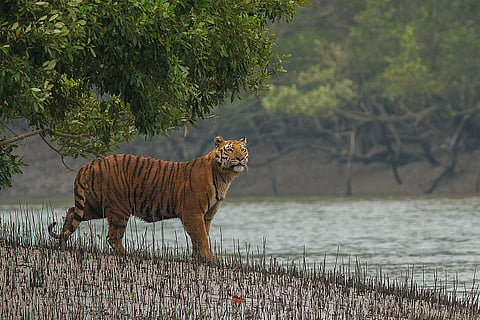
- Destinations
- Experiences
- Stay
- What's new
- Celebrating People
- Responsible Tourism
- CampaignsCampaigns
- SubscribeSubscribe
- Buy Now

The Sunderbans will soon have a new museum dedicated to showcasing the untold stories of the mangrove forest, a UNESCO World Heritage site in West Bengal. The Sunderban Museum is set to be inaugurated within the next three months and will serve as a cultural and ecological archive.
The Sundarbans are the world's largest mangrove forest, located in the Bay of Bengal delta, primarily in Bangladesh and India, and are named after the abundant sundari trees (Heritiera fomes) found there. The name "Sundarbans" translates to "beautiful forest" in Bengali, reflecting the lush and diverse nature of this unique ecosystem.
The Sunderban Museum will be located in the Sajnekhali area of the renowned Sundarbans National Park. This state-of-the-art facility will provide visitors with an immersive experience and offer a deeper understanding of the region's remarkable biodiversity, rich cultural history, and vital conservation efforts.
As a comprehensive cultural and ecological archive, the museum aims to share the often untold stories of this unique forest region, which has garnered recognition as a UNESCO World Heritage site. The museum will showcase the intricate relationships between local communities and their environment through carefully curated exhibits, highlighting how the lush landscapes and diverse wildlife have influenced local traditions, lifestyles, and livelihoods.
This initiative is part of broader efforts to raise awareness and advocate for the preservation of the Sundarbans, an essential natural resource that plays a crucial role in the area's ecological balance. By enhancing public knowledge and appreciation of this extraordinary habitat, the Sunderban Museum aims to inspire a commitment to sustainable practices and conservation measures that will benefit both the environment and the local communities that depend on it.
Visitors can immerse themselves in the region's maritime heritage by exploring traditional boats and nautical tools, while uncovering tales of pirates and the seafaring culture. The exhibits will showcase local biodiversity, preserved plant and animal specimens, and tribal handicrafts.
One section will address the impacts of cyclones and climate change, highlighting rising sea levels and extreme weather. Conservation efforts will be presented through interactive displays that emphasise environmental initiatives, concluding with discussions on balancing livelihoods with ecological sustainability in the Sundarbans.
One of the museum's key focuses will be the unique interplay between nature and culture, emphasising the connection between Indigenous communities and the mangrove ecosystem. Visitors will learn about traditional fishing practices, artisanal crafts, and the spiritual beliefs intertwined with the land and its wildlife, particularly the iconic Royal Bengal Tiger, which symbolises pride and conservation in the region.
The folklore of the Sundarbans centres on the relationship between humans and the natural world, particularly the mighty tiger and the protective spirit known as Bonbibi. The tales of Bonbibi, the forest goddess, and Dakshin Rai, the demon king, are integral to the region's cultural identity. These stories passed down through generations, reflect the community's dependence on the forest for their livelihoods and their respect for the formidable creatures that inhabit it.
Many books reference this rich folklore. In his Sundarbans trilogy, especially in The Hungry Tide and Jungle Nama, writer Amitav Ghosh delves into these legends, focusing particularly on the story of Bonbibi, the benevolent goddess of the forest.
